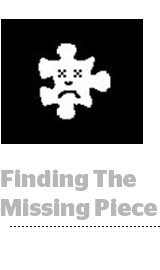 Steve Jobs’ notorious open letter “Thoughts on Flash,” published in 2010, was considered the final nail in the coffin for its status as the go-to software for web and mobile development.
Steve Jobs’ notorious open letter “Thoughts on Flash,” published in 2010, was considered the final nail in the coffin for its status as the go-to software for web and mobile development.
But like the Internet’s most powerful zombie, Flash has continued to play a prominent role for developers and ad builders. HTML5, the solution listed by Jobs and championed by many in the ad tech community, has struggled to achieve full adoption or hit critical mass.
That may be ending. Ad tech companies are building a series of products for marketers and developers designed to integrate HTML5 into the established Flash workflow, making it easier for anyone from agencies to ad servers to compost their Flash production.
According to Sizmek product manager David Simutis, there are a couple important reasons why HTML5 has not buried its competition when almost all agree that Flash has been antiquated.
“HTML5 is more difficult to learn, which is partially why it’s been slow to adopt,” he said. “And the people making ads for mobile came up in the Flash era, so they’ve been doing what’s comfortable, and that creative hasn’t been optimized.”
However, user migration to mobile is forcing adoption to HTML5 more than any decrees from Apple or Google, let alone Adobe itself sunsetting Flash. As Jobs explicitly stated half a decade ago, this is about solving “the problem that most Flash websites need to be rewritten to support touch-based devices.”
Adcade recently released a product, Epoch, designed to bridge the divide between developers and designers using HTML5 and mobile advertising. The products for building ads in HTML5 have been “simplistic drag-and-drop” styles, which has discouraged widespread HTML5 use because their animation and cross-device capabilities weren’t worth the transition, claimed Adcade co-founder and CEO Rob Cromer in an email to AdExchanger.
“Our product is focused on the creative builder. By putting our energy into a creative tool and leaving the ad serving to companies like Sizmek, we are able to build a better product for the end user,” he said.
Simutis emphasized that though Sizmek does have its own HTML5 creative product, named Ad Builder, its efforts are about improving the overall quality of mobile advertising as a community.
“We want to empower the creative side to adopt HTML5 and be able to produce compelling ads for mobile,” he said. “Because if they can do that, then it makes our job way, way easier when it comes to putting those ads in front of people in an impactful way.”
For instance, a common problem in HTML5 ad production has been serving the same ad across channels. Sizmek and tech vendors are judged on ROI, and if an ad doesn’t animate for mobile properly or doesn’t frame correctly when adjusting dimensions, then that’s a major concern.
The Gary Group uses Sizmek’s Ad Builder product, and company VP Brendan Gormley said in an email that, “Because the platform is intuitive and accessible we will never serve a static backup again.” He described the change as having “given our shop a leg up.”
Nevertheless, the advertising creatives and graphic designers that actually create the ads cut their teeth on Flash. Instead of reinventing the wheel, companies like Sizmek and Adcade try to emulate as much as possible the design and developer flow of Flash.
The solution is to build a tool that changes on the back end to incorporate new browser technology, but the front end remains the same, thus ensuring graphic designers and agencies aren’t constantly learning new tools and workflow.
Seventeen years passed between the establishment of HTML4 as a web standard and the development of HTML5. Builders of ad products are already thinking about HTML6.
Having learned a lesson from the slow, painful move away from Flash, Cromer said, “It is very important to futureproof the industry and solidify a workflow that can scale with the times.”
In many ways, Flash has sustained market share despite glaring flaws, such as battery drain and a lack of open-source development, simply because it hasn’t been able to familiarize ad-makers with a new process. For agencies though, improved creative product suites and the urgent necessity of better-quality mobile animation is making that a moot point.
“We’re seeing 60% of all digital use come from mobile,” said Simutis, “and that number’s going up.” At the heart of the matter – why Apple refused to incorporate Flash into its mobile product lines and why companies like Adcade and Sizmek see high potential in pioneering post-Flash ad formats – is the fact that “a static JPEG isn’t going to cut it on your phone.”













